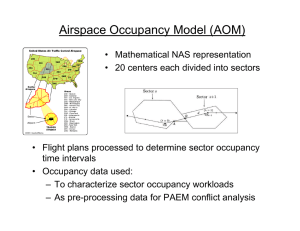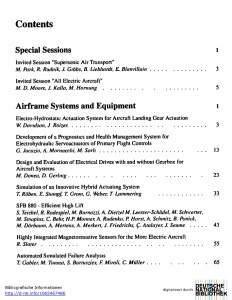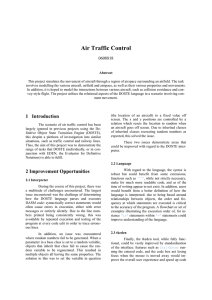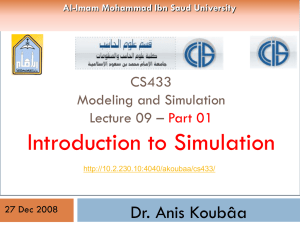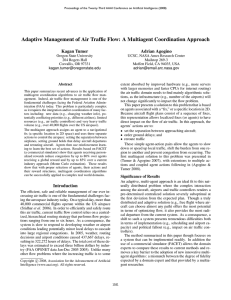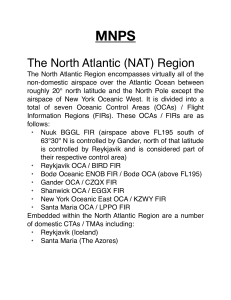Aggregate Airspace Congestion Modeling David Lovell
advertisement
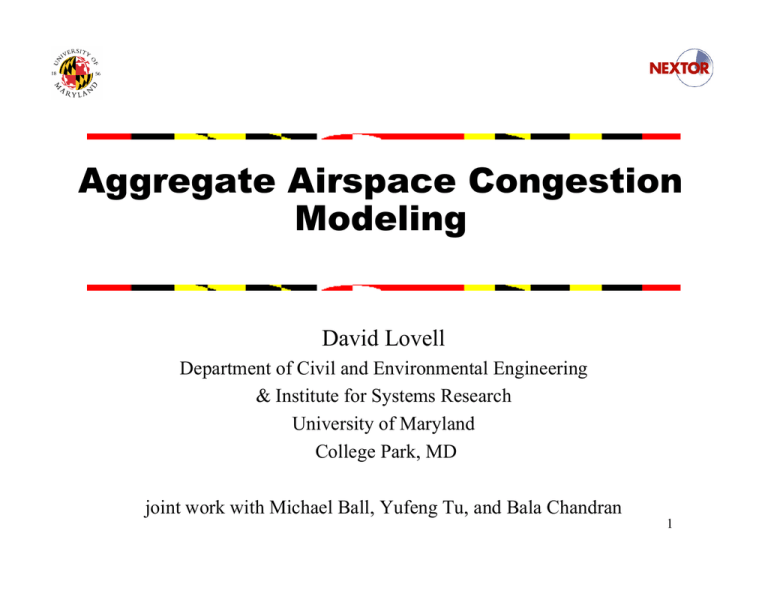
Aggregate Airspace Congestion
Modeling
David Lovell
Department of Civil and Environmental Engineering
& Institute for Systems Research
University of Maryland
College Park, MD
joint work with Michael Ball, Yufeng Tu, and Bala Chandran
1
Evolving from Monitor Alert
• Improvements
• Queueing effects in the NAS caused by capacity restrictions
• Stochastic departure times of aircraft
•Applications
• Collaborative decision-making and schedule refinement
• Congestion alerts over the course of the day
• Outputs
• Probability of congestion in sector x at time t
• Distribution of delays to flights
• Airspace capacity estimation
Issues related to model scale
• Microscopic simulation models are OK when time is
plentiful
• Our goal: rougher estimates in a single pass
• Limited network topology
• Fluid modeling of “probability flows” – continuum
diffusion equations operating on tandem queues
• Convergence, or “laws of large numbers”
Propagation of “probability packets”
Probability
1 min
0.1
0.2
.14
0.3
.14
.23
0.1
.06
0.5
0.3
.07
.36
.36
.14
.06
.03
.14
.07
Time
Aircraft “A”
Aircraft “B”
Example of interaction effects
1
a ir c ra f t
2
1
a ir c ra f t
0 .8
0 .9
0 .7
0 .8
probability of occupancy
probability of occupancy
0 .6
0 .7
0 .6
0 .5
0 .4
0 .3
0 .5
0 .4
0 .3
0 .2
0 .2
0 .1
0 .1
0
0
1 0 0
ti m e
• P{cancel} = 0
• tA ~ uniform(0,100)
2 00
0
0
1 00
2 00
3 00
ti m e
For aircraft A and B:
• P{cancel} = 0.5
• tA, tB ~ indep. uniform (0,100)
• server capacity = 1
Preliminary results
Bala attempted to categorize interactions according to some degree of
severity: “strong” and “weak” and developed heuristic methods to
handle these situations:
Sector Count
Sector Count
25
25
20
20
15
15
10
10
5
5
0
0
No of aircraft
No of aircraft
Model
Model
Simulation
Simulation
1
1
39
39
77
77
115
115
153
153
191
191
229
229
267
267
305
305
343
343
381
381
419
419
457
457
495
495
•
Time period
Time period
Predicted
Actual
Travel Time Travel Time
119
119.555
116.199
340
111.755
114.744
954
356.743
364.500
Flight No


